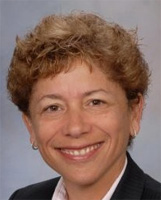Five Issues That Must Be Addressed To Advance The Use Of RWE

By Ed Miseta, Chief Editor, Clinical Leader

Edith Perez, M.D., is the chief medical officer (CMO) of Bolt Biotherapeutics, an immuno-oncology company based in the San Francisco Bay Area. She has dedicated her career to addressing unmet needs in patient cancer care through pioneering work in clinical research and by advocating broad patient inclusion in early screening and the clinical trials of new therapeutics. In addition, Perez is a Professor of Medicine at Mayo Clinic and Director of the Mayo Clinic Breast Cancer Translational Genomics Program, where she has practiced for two decades. In her current role as CMO at Bolt, Perez is responsible for the leadership, oversight, and management of clinical, regulatory, pharmacovigilance, biostatistics, and medical affairs.
Real-world evidence (RWE) is a trending topic in the clinical space and Perez believes it will continue to shape clinical trial design and execution in the coming years. She certainly believes it will help drive the future of research at Bolt.

What Are The Gaps
Perez believes the industry has historically struggled to deliver on the promise of RWE. She notes there are five issues that still exist around the gathering and use of real-world data (RWD) that the industry will need to overcome. The first is addressing disparities between the demographics of volunteers participating in clinical studies and the demographics of the patient population.
“We have subsets of patients who participate in clinical trials,” Perez states. “But there are still many more patients who can benefit from the treatment. They may be part of a patient subset that is not able to participate in trials or that we are unable to address with any statistical significance in a Phase 3 trial. We now can perform that exploration via the use of RWD. This takes us one step closer to the point where we understand the safety and efficacy of compounds for all subsets of patients with the disease.”
That leads to the second issue, which is the quantity of data required. How many patients are needed from a certain subset to be able to achieve relevant statistical analyses for all populations? More data points, for example, recorded at different times, will enable researchers to better understand the safety profile of a drug. To do so, the industry will have to understand exactly how much data is needed to make informed decisions.
Data Quality Is A Concern
The third issue is the quality of the data itself. “We need to know if we are collecting data in a uniform manner,” states Perez. “At Bolt, our clinical studies are designed using criteria developed by the National Cancer Institute to grade the safety of our compounds, and we also use established risk criteria to evaluate the clinical response of patients to a therapy. We need to think about how those factors correlate with the reporting of data in clinical practice. If the industry does not standardize measurable and reportable criteria, it will be very difficult for us to trust the data we receive from physicians.”
Today, there are streams of data being generated by health apps and digital devices that did not exist 10 years ago. Perez believes this will be a challenge to drug developers, as both the quantity and quality of data will drive drug development.
“Years ago, we did not really have the opportunity to learn from others,” she says. “That has changed significantly, enabling the iteration of data collection. In oncology, there is a set of guidelines that have been assembled that help practitioners and those in the reimbursement community. These guidelines are not static; they are updated based on data from various sources. The more homogenization we have in data gathering, the easier it will be to assemble and use RWD.”
Aggregate And Disseminate RWD
This is where the fourth and fifth considerations come into play: aggregation and dissemination of data. If 30,000 medical oncologists are treating patients and collecting data in a specific way that is best for their unique practice, the industry will not have homogenous and robust data. Perez believes national guidelines for not only the management but also the documentation of outcomes of patients with cancer (i.e., safety, clinical response) will be helpful to the real-world aggregation and assessment of data.
“We need to continue to educate practitioners,” says Perez. “If they do not report the data in a way that is understandable in the context of clinical trials, we may not be able to leverage the data and disseminate it in a manner that will best help patients.”
When it comes to educating practitioners, Perez believes this is the perfect opportunity for pharma companies to create partnerships with clinicians. She notes physicians want to do what is best for their patients, and the data they gather from them needs to be part of the educational process. Collaboration will be required for data to be properly aggregated and interpreted by academia, biopharma, and regulatory agencies.
“If we think the ultimate result of gathering RWD will be drug approvals, that is problematic,” she states. “There are many commercial aspects that will play a role and make it difficult for companies to collaborate. But if we think of RWD as a way to improve practice and our understanding of patient care, it will be much easier for companies to collaborate. We must talk to each other for this effort to be successful. The more we have this conversation, the more it will resonate with oncologists, hematologists, radiologists, surgeons, and others. We need to get to the point where the data reported in medical records by medical practitioners will be similar to how we record data in clinical trials.”
Can We Trust Regulators?
When it comes to the regulatory implications for the use of RWD, Perez believes the issue of trust arises. The FDA released guidance on the use of RWD a couple years ago, but it seems many in the industry are concerned the regulator may change its tune. Perez notes she is more of a trusting individual and therefore has a different approach to guidance. If the FDA issues guidance, she wants to provide input to that guidance that will improve drug development in the future. She also wants to understand how any new guidance will help her company develop drugs for patients.
“We need to learn from that novel guidance rather than question it and continue doing things the old way,” she adds. “Many pharma companies may still do things the old way because they are worried about regulators still requiring material “the old way” or reverting their guidance. They worry they may not get a drug approved if they deviate from the old ways of doing things. We need to get past that for all of us to be more successful.”
